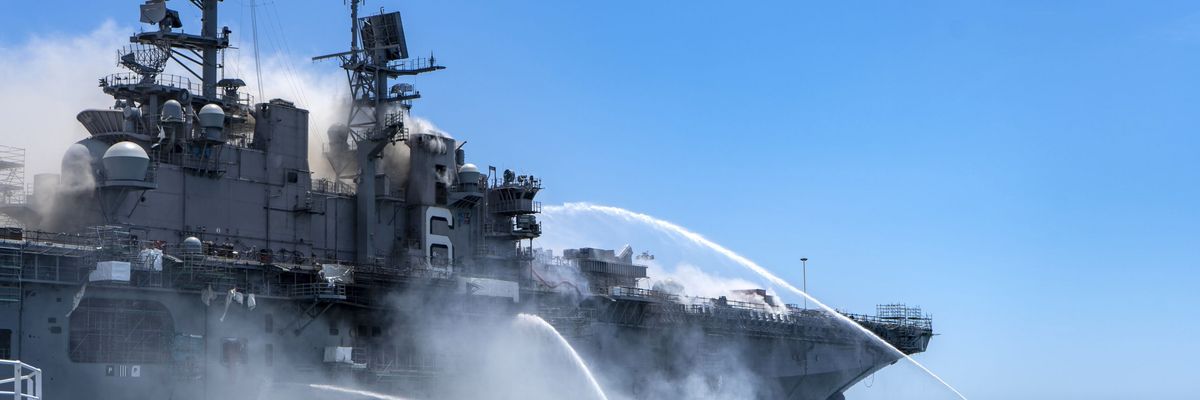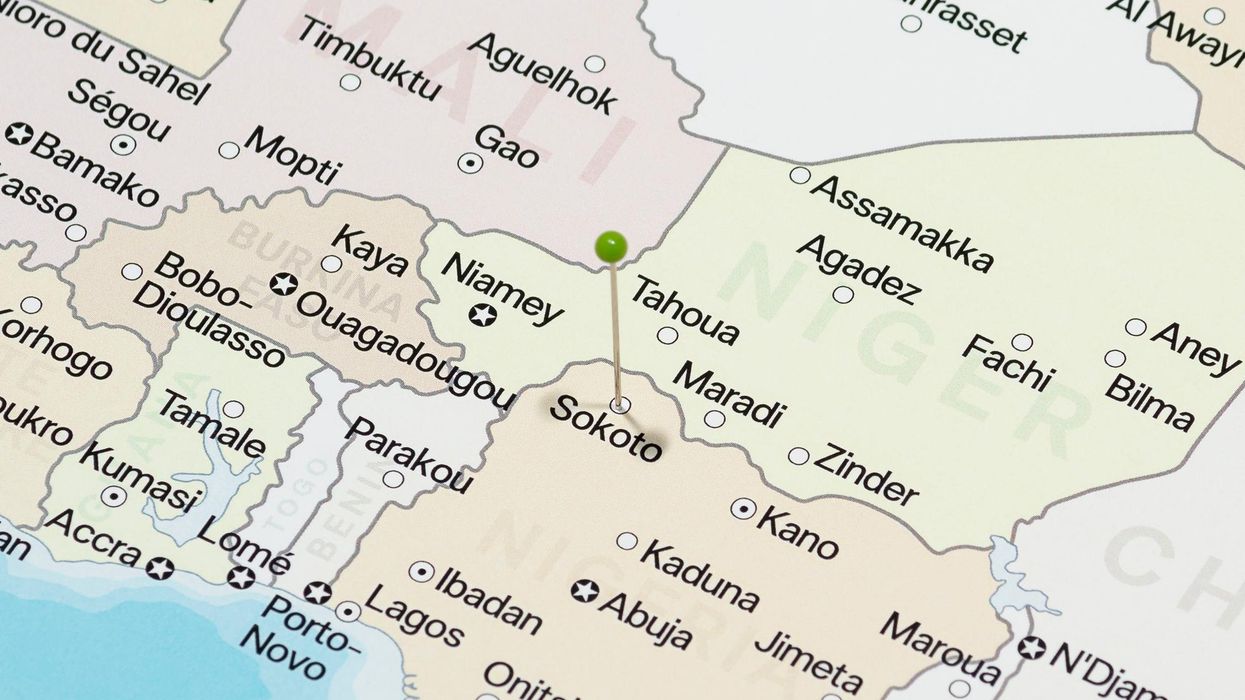Last week’s crippling fire on the amphibious assault ship USS Bonhomme Richard raised further questions about the state of our Navy just as the Trump administration recklessly careens down a path towards maritime confrontations with China in the South China Sea and elsewhere.
The fire on the Bonhomme Richard is only the latest in a series of damaging incidents that call into question the Navy’s ability to take on the central role called for in the Defense Department’s priority of re-orienting the nation’s armed forces away from hunting jihadists across South Asia towards focusing on revisionist great powers in Moscow and especially Beijing.
Yet the hits against those on the bridge, below decks, and throughout the head and limbs of the U.S. Navy keep coming — just as the inconclusive land wars of the last 20 years may be finally (and thankfully) sputtering out.
The list of Navy problems of strategy, warships, weapons, and above all, command, obedience and morale is long and seems to keep growing. Individually, each of these issues can be attributed to circumstantial factors that mean little to outsiders, but collectively the sum of these issues points to a maritime force that was long the nation’s first line of defense but which is now beset with serious and systemic problems that need immediate attention.
First there is the issue of combat effectiveness at the lowest echelons of maritime service, the combination of ships, aircraft, materiel and command, obedience, discipline, and readiness. The Navy’s investigation of the fire on the Bonhomme Richard is only just beginning, but it’s unclear just how familiar the crew and the senior leaders were with the fire suppression equipment on the ship and proper procedures for storing flammable material. Indeed, there is a long and tragic history of devastating fires on Navy ships.
Recent history has revealed in the Navy’s investigations on accidents in the Pacific with the USS McCain and the USS Fitzgeraldfound that officers on the bridges of both ships were woefully ignorant of basic sailing skills. The lack of basic competencies of shipboard life in routine and crisis fit within a systemic pattern of cutting corners on readiness throughout the Pacific fleet. Navy leaders ignored repeated warnings from lower levels on implications of the decline in fleet readiness.
Second, the Navy has shown an alarming inability to build and operate affordable, reliable, and capable ships. The USN just retired the first four Littoral Combat Ships after just 10 years — with one of the ships being just six years old. These vessels are the youngest ships ever retired from Navy service. Despite looking great in photo-ops due to their sleek, innovative appearance, the ships have turned out to be expensive procurement disasters that never worked as advertised. The Navy will abandon this multi-billion program in favor of a new frigate that is projected to cost over $1 billion per copy, which will have one essential implication: the Navy (and the country) will not be able to afford many of them.
Then there is the multi-billion-dollar USS Zumwaltguided missile cruiser that the Navy eventually abandoned. It was supposed to be invisible to enemy radar and fire shells from several hundred miles offshore. Like the LCS, the USS Zumwalt was abandoned because it didn’t work as advertised and has become an expensive technology demonstrator platform of dubious service and combat usefulness that cost the taxpayers billions.
Then there is the new USS Fordclass aircraft carrier program that remains mired in technical problems and persistent cost overruns. In early July 2020, the Navy fired the program manager for failing to accomplish what none of the other program managers could accomplish: making the Ford’s advanced technologies successfully work together.
The litany of these failed programs leaves a legacy of expensive breakdowns in the fleet that is hardly confidence inspiring. These collective failures suggest that the Navy is simultaneously pricing itself out of business as it also repeatedly demonstrates an inability to field innovative, new ships to meet twenty-first century maritime threats.
Third, the Navy has apparently lost the civil-military confidence of senior Defense Department civilians. Earlier this spring, Defense Secretary Mark Esper held back the Navy’s 30-year shipbuilding plan from being provided to Congress due to unanswered questions about the relevance of that plan to fiscal realities and the strategic environment.
While the Navy has trumpeted a sought-after fleet size of 355 ships as an objective, it’s not clear whether, when, or how the Navy will ever reach this programmatic and strategic goal central to great power competition in an ever more dangerous global order. After standing on the sidelines for decades shirking its oversight role and mindlessly cutting checks for failed systems, Congress has finally demanded answers from the Navy and senior Defense Department civilians on the Navy’s stalled modernization plans.
The three-pronged crisis come as the Trump administration lunges towards a confrontation with China in all spectrums of conflict — a confrontation in which maritime rivalry and conflict form the centerpiece of friction between the world’s two wealthiest countries. The United States continues to send Navy ships on freedom of navigation missions in the South China Sea and the Strait of Taiwan. On July 14, Secretary of State Mike Pompeo forcefully reiterated that the United States regards China’s claims to 1.3 million square miles in the South China Sea as illegal under international law.
All these elements of a perfect storm are regrettably converging: a Navy in crisis on various levels just as the Trump administration has chosen to invoke a magical, mysterious, and sinister threat from China. To be sure, the question of how the world order and great powers will either stumble into war as in the past or find some modus vivendi in a confused and damaged world is an issue of the most fateful statecraft. The crisis also unfolds as too few military and political leaders demonstrate an understanding about war at sea and/or the use of maritime force as lever of geopolitical great power competition to prevent escalation in a maritime crisis leading to general war.
Part of the answer to this strategic problem rests of the capacity of the U.S. Navy on the high seas to operate at all levels of conflict in the face of actual Russian and Chinese threats. The Navy must be capable both of deterring conflict and securing victory at all levels of future war, as unthinkable as that may seem.
The crisis of command at sea and failures of naval ships and weapons found their most tangible manifestation in the sidelining of the USS Theodore Roosevelt in Guam with the scandal surrounding Captain Brett Crozier and now with the billowing clouds of burnt warship joined with the rampant virus in the air above San Diego. The U.S. government and its voters should heed these signals to preclude the danger of crisis leading to major war on a scale unseen since the fall of 1950 or worse.
















